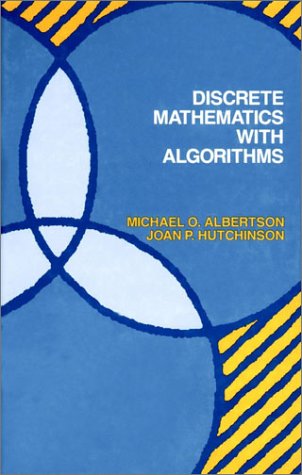
Discrete Mathematics with Algorithms
by M. O. Albertson, J. P. Hutchinson
Publisher: J. Wiley 1988
ISBN/ASIN: 0471849022
ISBN-13: 9780471849025
Number of pages: 550
Description:
This first-year course in discrete mathematics requires no calculus or computer programming experience. The approach stresses finding efficient algorithms, rather than existential results. Provides an introduction to constructing proofs (especially by induction), and an introduction to algorithmic problem-solving. All algorithms are presented in English, in a format compatible with the Pascal programming language.
Download or read it online for free here:
Download link
(14MB, PDF)
Similar books
 Discrete Structures
Discrete Structuresby Vladlen Koltun - Stanford University
Contents: Sets and Notation; Induction; More Proof Techniques; Divisibility; Prime Numbers; Modular Arithmetic; Relations and Functions; Mathematical Logic; Counting; Binomial Coefficients; Inclusion-Exclusion Principle; Pigeonhole Principle; etc.
(12162 views)
 Mathematics for Computer Science
Mathematics for Computer Scienceby Eric Lehman, F Thomson Leighton, Albert R Meyer - MIT
An introduction to discrete mathematics oriented toward Computer Science and Engineering. Topics covered: Fundamental concepts of Mathematics: sets, functions, number theory; Discrete structures: graphs, counting; Discrete probability theory.
(16749 views)
 Advances in Discrete Differential Geometry
Advances in Discrete Differential Geometryby Alexander I. Bobenko (ed.) - Springer
This is the book on a newly emerging field of discrete differential geometry. It surveys the fascinating connections between discrete models in differential geometry and complex analysis, integrable systems and applications in computer graphics.
(8387 views)
 Mathematics for Algorithm and Systems Analysis
Mathematics for Algorithm and Systems Analysisby Edward A. Bender, S. Gill Williamson - Dover Publications
This text assists undergraduates in mastering the mathematical language to address problems in the field's many applications. It consists of 4 units: counting and listing, functions, decision trees and recursion, and basic concepts of graph theory.
(31563 views)